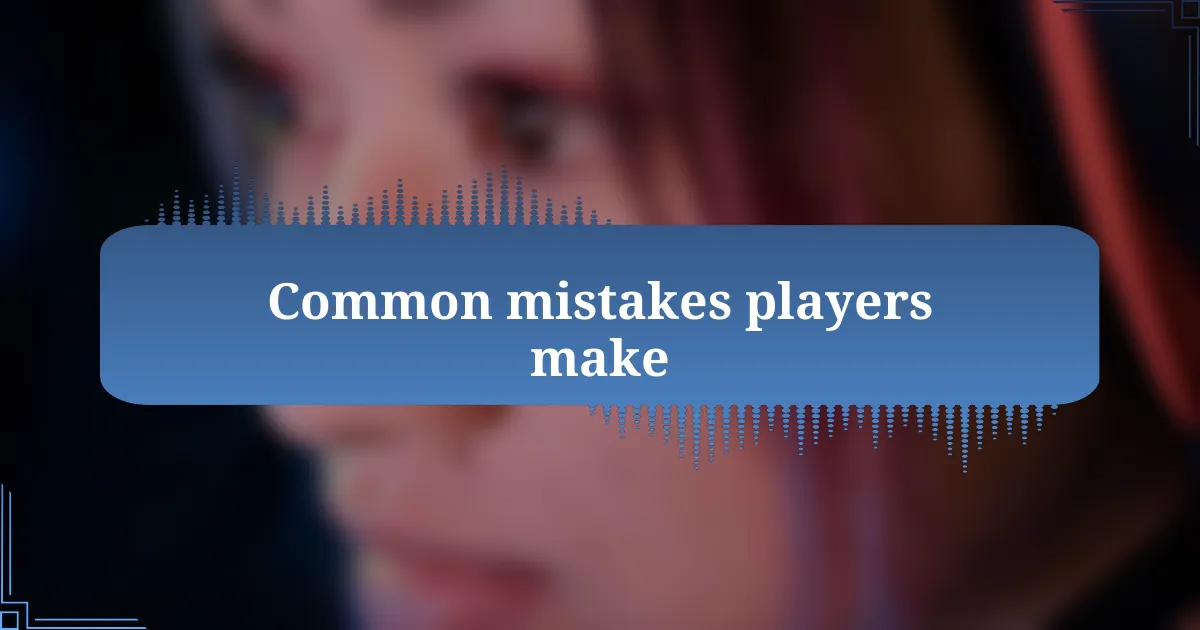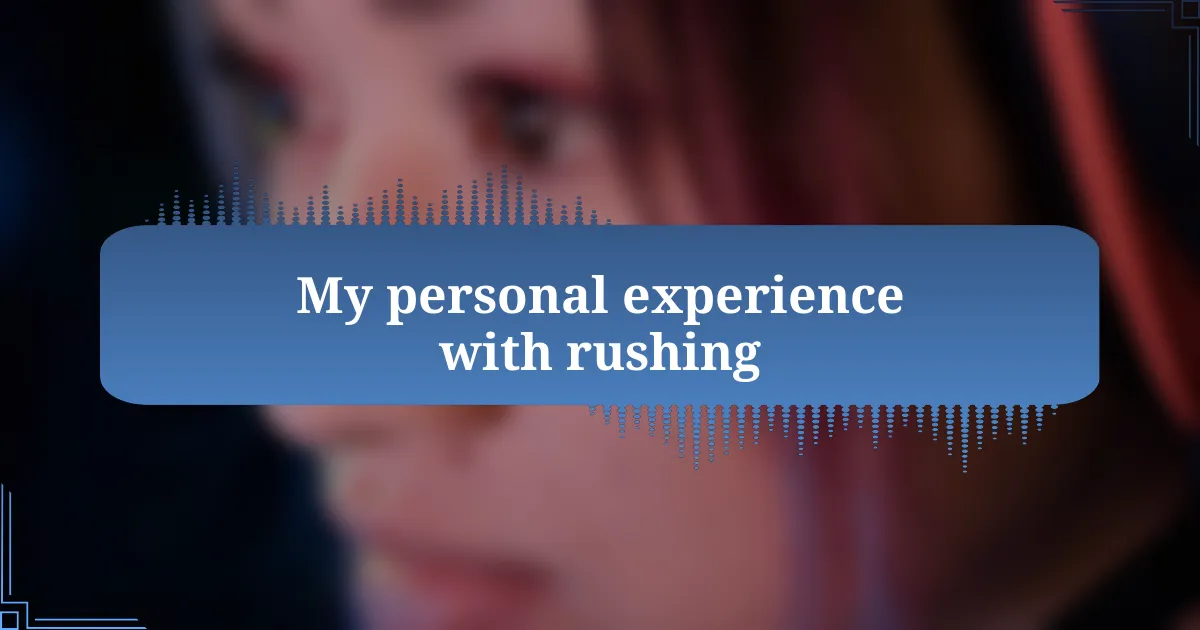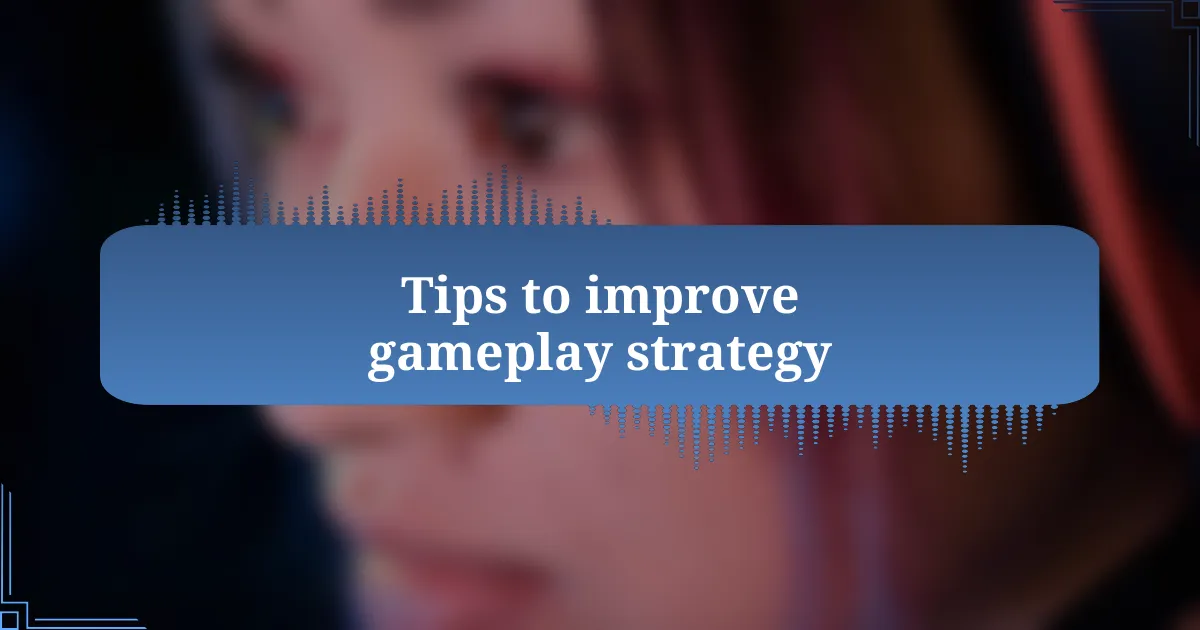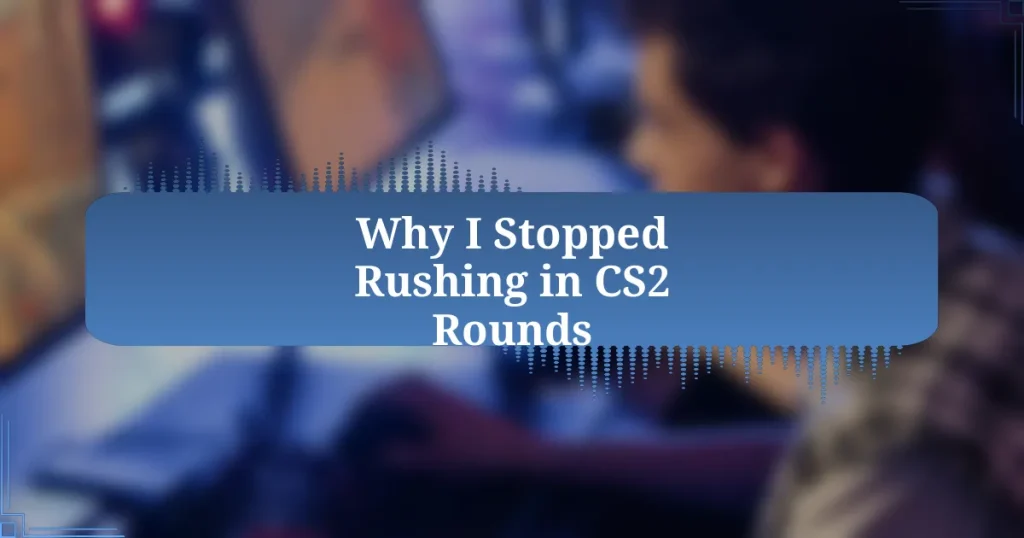Key takeaways:
- Team coordination and communication are essential to avoid costly mistakes when engaging in gameplay.
- Rushing into combat can lead to chaos and disrupt team strategy, often resulting in being outnumbered or eliminated.
- Awareness of the audio environment and surroundings, including map awareness, is crucial for gaining a competitive edge.
- Utilizing game mechanics, such as smoke grenades, can enhance gameplay effectiveness and provide strategic advantages.

Common mistakes players make
Rushing into a round without coordinating with your team is a mistake I see often. There have been matches where I charged in solo, thinking I could take out a couple of enemies on my own, only to be quickly outmatched. It left my team at a disadvantage, and I realized that teamwork is crucial; communication can literally turn the tide of a game.
Another common pitfall is not paying attention to sound cues. I remember a game where I ignored the footsteps of an enemy sneaking in my direction, convinced I was safe. When I finally noticed, it was too late, and I was down before I could react. Being attuned to the audio environment can provide invaluable information, so why overlook it when it can offer a competitive edge?
Lastly, overcommitting after securing a kill can lead to unnecessary deaths. I’ve learned this the hard way; I got too excited when I took out an enemy and pushed for another kill, only to fall victim to a well-defended position. Patience and strategic evaluation are key. Have you ever found yourself in a similar situation? It’s vital to take a step back and assess before blindly charging ahead.

Effects of rushing in rounds
Rushing into rounds can create an adrenaline rush, but the aftermath is often chaotic. I recall a match where I blitzed ahead, convinced I could flank the enemy. Instead, I found myself isolated and overwhelmed by multiple opponents, which left my teammates scrambling to cover the gap I created. The thrill of rushing might feel exhilarating, but the reality is that it often leads to costly mistakes.
It’s easy to forget that rushing can skew your team’s strategy. There was a round that sticks out in my memory; I charged in prematurely, throwing off our carefully planned execution. My teammates, who expected a synchronized attack, were left standing back while I met my end. This solo effort not only wasted my life but also disrupted our cohesion, marking a turning point in that round’s outcome.
What about the mental toll of relentless rushing? I’ve often felt the pressure to perform in fast-paced environments, which can cloud your judgment. The more I rushed, the more reckless I became, and it took a toll on my overall gameplay. Recognizing the need for a balance between aggression and strategy helped me regain control and elevate my performance. Have you felt that shift in your game? It’s a lesson learned through experience, one that truly reshaped how I approach every round.

My personal experience with rushing
I remember an intense match where my instinct was to charge in, believing I could secure the first kill. Instead of a quick takedown, I found myself outnumbered and eliminated before my team could engage. That moment hit hard—realizing that my impulsive rush not only cost me my life but put my teammates in a tough spot.
There was another time when I felt particularly bold and decided to rush through a narrow corridor. The adrenaline was pumping, but as I turned the corner, I was greeted by the opposing team, ready and waiting for me. The shock I felt was palpable, but what lingered longer was the embarrassment of letting my team down. It was a harsh lesson in restraint, one that I carry with me into every round.
Looking back, I can’t help but wonder how many rounds I’ve thrown away simply by being too eager to engage. That impatience can spiral quickly into chaos. Each rush was a gamble, and while some may pay off, too often, it built an unstable foundation for my gameplay. It became clear to me that patience and teamwork were far more rewarding than the fleeting thrill of a quick rush.

Tips to improve gameplay strategy
When refining your gameplay strategy, communication with your teammates is paramount. I remember a round where I made a call to split up and flank the enemy, but I didn’t clearly convey my intentions. The confusion led to us being outmaneuvered, leaving me frustrated and questioning why I didn’t prioritize discussing our plan. If I had taken the time to collaborate, we could have executed a well-coordinated attack instead of scrambling to recover from my mistake.
Another essential tip is to map awareness. I often found myself too focused on the immediate skirmish, losing sight of my surroundings. There was one match where I crept into a well-known ambush spot, completely oblivious to a sniper perched above. The feeling of being taken out without any chance to react taught me the importance of keeping an eye on the minimap, so I’ve made it a point to glance at it regularly. Have you ever noticed how much of the game you miss by concentrating solely on the fight?
Lastly, practicing utility usage can dramatically improve your strategy. I once neglected to employ smoke grenades while pushing into a site, thinking sheer firepower would suffice. Instead, we walked straight into a trap set by the enemy, who capitalized on our lack of cover. Now, I make a conscious effort to integrate utility into my gameplay, ensuring I create opportunities for both myself and my teammates to succeed. Isn’t it amazing how a well-timed flashbang can change the tides of battle?













